Serving 87 students in grades 7-12, St. Joe High School ranks in the bottom 50% of all schools in Arkansas for overall test scores (math proficiency is bottom 50%, and reading proficiency is top 50%).
The percentage of students achieving proficiency in math was 20-29% (which was lower than the Arkansas state average of 47%). The percentage of students achieving proficiency in reading/language arts was 50-59% (which was approximately equal to the Arkansas state average of 53%).
The student:teacher ratio of 7:1 was lower than the Arkansas state level of 13:1.
Minority enrollment was 15% of the student body (majority American Indian), which was lower than the Arkansas state average of 42% (majority Black).
School Overview
Grades Offered
Grades 7-12
Total Students
87 students
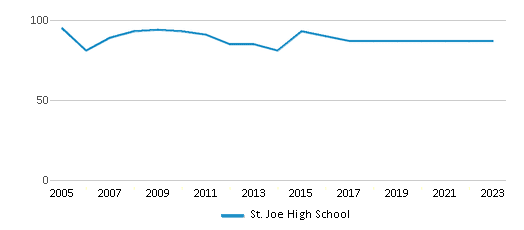
Gender %
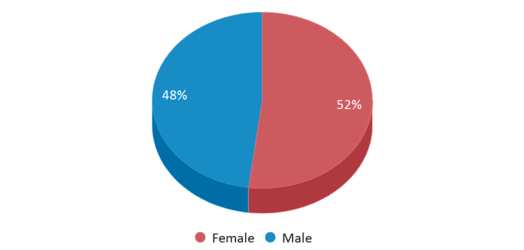
Total Classroom Teachers
13 teachers
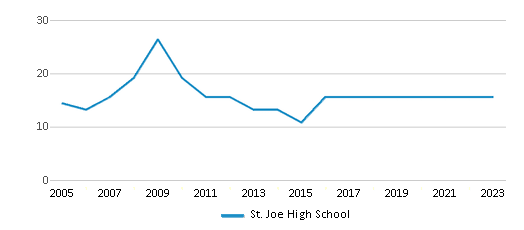
Students by Grade
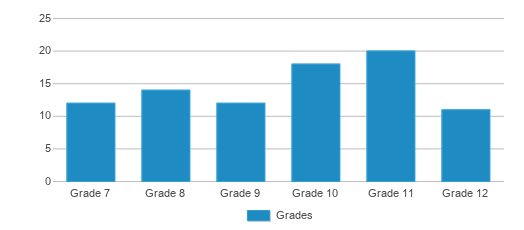
School Rankings
Math Test Scores (% Proficient)
(16-17)20-29%
47%
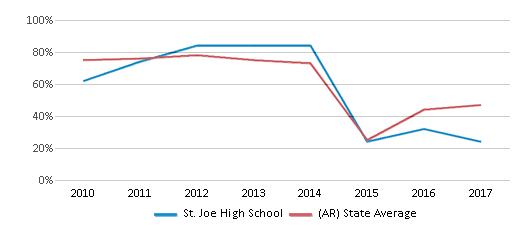
Reading/Language Arts Test Scores (% Proficient)
(16-17)50-59%
53%
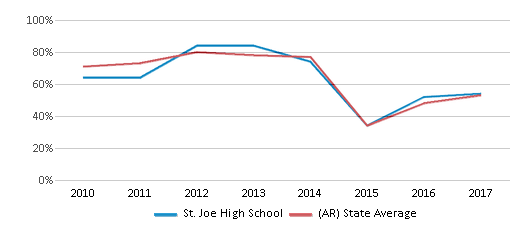
Student : Teacher Ratio
7:1
13:1

American Indian
8%
n/a
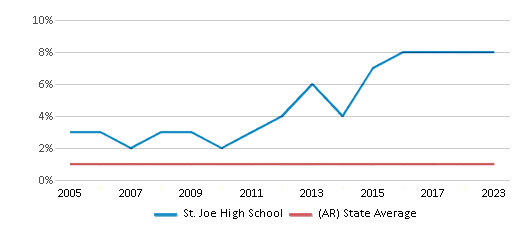
Asian
2%
2%
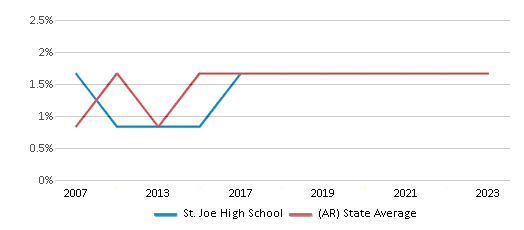
Hispanic
5%
15%
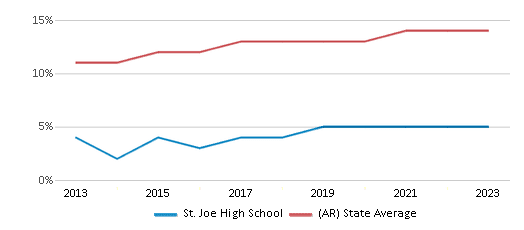
Black
n/a
19%
White
85%
58%
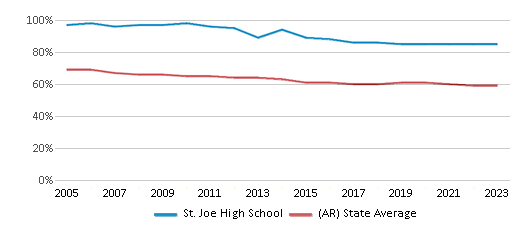
Hawaiian
n/a
1%
Two or more races
n/a
5%
All Ethnic Groups

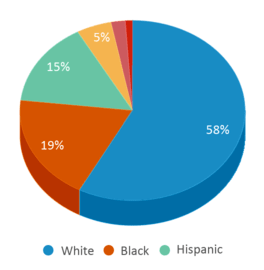

Graduation Rate
(16-17)≥50%
87%
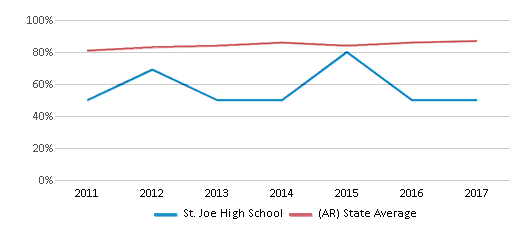
Eligible for Free Lunch
44%
56%
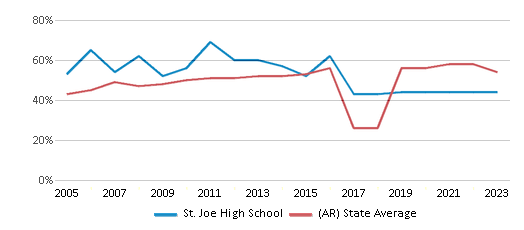
Eligible for Reduced Lunch
18%
10%
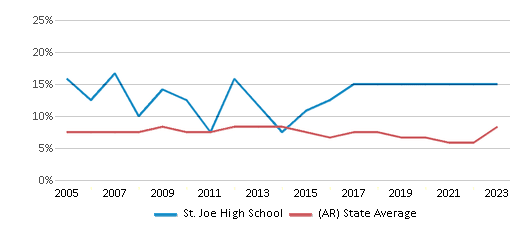
School Statewide Testing
School District Name
Source: National Center for Education Statistics (NCES), AR Dept. of Education
Frequently Asked Questions
What percent of students have achieved state testing proficiency in math and reading?
20-29% of students have achieved math proficiency (compared to the 47% AR state average), while 50-59% of students have achieved reading proficiency (compared to the 53% AR state average).
What is the graduation rate of St. Joe High School?
The graduation rate of St. Joe High School is 50%, which is lower than the Arkansas state average of 87%.
How many students attend St. Joe High School?
87 students attend St. Joe High School.
What is the racial composition of the student body?
85% of St. Joe High School students are White, 8% of students are American Indian, 5% of students are Hispanic, and 2% of students are Asian.
What is the student:teacher ratio of St. Joe High School?
St. Joe High School has a student ration of 7:1, which is lower than the Arkansas state average of 13:1.
What grades does St. Joe High School offer ?
St. Joe High School offers enrollment in grades 7-12
What school district is St. Joe High School part of?
St. Joe High School is part of Ozark Mountain School District.
Recent Articles

What Is A Charter School?
Explore the world of charter schools in this comprehensive guide. Learn about their history, how they operate, and the pros and cons of this educational innovation. Discover key facts about charter schools, including admission policies, demographics, and funding, as well as what to look for when considering a charter school for your child.

10 Reasons Why High School Sports Benefit Students
Discover the 10 compelling reasons why high school sports are beneficial for students. This comprehensive article explores how athletics enhance academic performance, foster personal growth, and develop crucial life skills. From improved fitness and time management to leadership development and community representation, learn why participating in high school sports can be a game-changer for students' overall success and well-being.

February 05, 2025
Understanding the U.S. Department of Education: Structure, Impact, and EvolutionWe explore how the Department of Education shapes American education, from its cabinet-level leadership to its impact on millions of students, written for general audiences seeking clarity on this vital institution.





